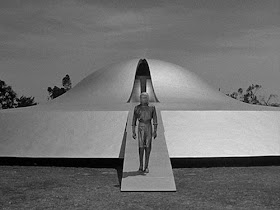Over the last three months regular visitors to The Celluloid Highway will have noticed that a poll to decide the next themed month has been in session. I’d like to thank all those who took the time to vote, and thus decide my fate for the month of May. The last themed month was January’s successful exploration of the Italian giallo, a category which led from day one and won at a canter. This time however it was more evenly contested, with several categories in contention until the last few days. Without further ado here are the full results.
01 1950’s Science-Fiction - 19 Votes (25%)
02 German Expressionism - 15 Votes (20%)
03 Akira Kurosawa - 12 Votes (16%)
04 Universal Horror - 12 Votes (16%)
05 Documentaries - 9 Votes (12%)
06 Wim Wenders - 8 Votes (10%)
May will see a month of 50’s science-fiction, and commiserations to German filmmaker Wim Wenders who picks up the wooden spoon. Many thanks again too all those who took part…and don’t forget to keep watching the skies!














